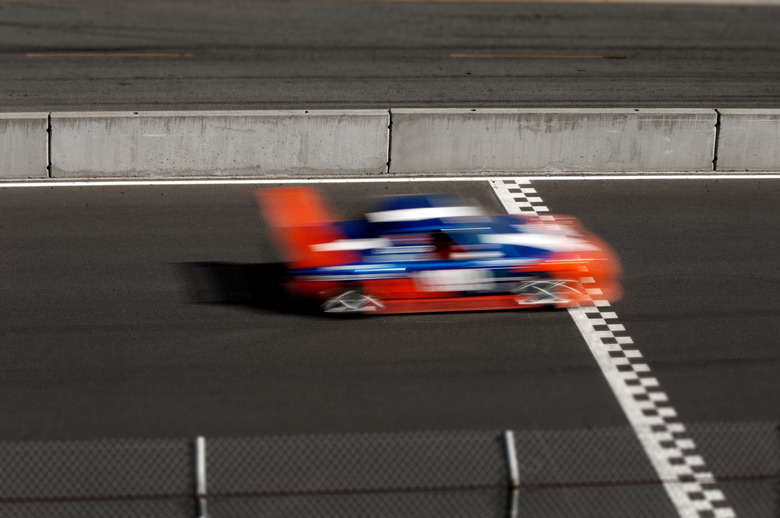How To Find Acceleration With Velocity & Distance
Kinematics is the branch of physics that describes the basics of motion, and you're often tasked with finding one quantity given knowledge of a couple of others. Learning the constant acceleration equations sets you up perfectly for this type of problem, and if you have to find acceleration but only have a starting and final velocity, along with the distance travelled, you can determine the acceleration. You only need the right one of the four equations and a little bit of algebra to find the expression you need.
TL;DR (Too Long; Didn't Read)
The acceleration formula applies to constant acceleration only, and _a_ stands for acceleration, _v_ means final velocity, _u_ means starting velocity and _s_ is the distance travelled between the starting and final velocity.
The Constant Acceleration Equations
The Constant Acceleration Equations
There are four main constant acceleration equations that you'll need to solve all problems like this. They're only valid when the acceleration is "constant," so when something is accelerating at a consistent rate rather than accelerating faster and faster as time goes on. Acceleration due to gravity can be used as an example of constant acceleration, but problems often specify when the acceleration continues at a constant rate.
The constant acceleration equations use the following symbols: a stands for acceleration, v means final velocity, u means starting velocity, s means displacement (i.e. distance traveled) and t means time. The equations state:
\(v=u+at\
s=0.5(u+v)t\
s=ut+0.5at^2\
v^2=u^2+2as\)
Different equations are useful for different situations, but if you only have the velocities v and u, along with distance s, the last equation perfectly meets your needs.
Re-Arrange the Equation for a
Re-Arrange the Equation for a
Get the equation in the correct form by re-arranging. Remember, you can re-arrange equations however you like provided you do the same thing to both sides of the equation in every step.
Starting from:
\(v^2=u^2+2as\)
Subtract u2 from both sides to get:
\(v^2-u^2=2as\)
Divide both sides by 2 s (and reverse the equation) to get:
\(a=\frac{v^2-u^2}{2s}\)
This tells you how to find acceleration with velocity and distance. Remember, though, that this only applies to constant acceleration in one direction. Things get a bit more complicated if you have to add a second or third dimension to the motion, but essentially you create one of these equations for motion in each direction individually. For a varying acceleration, there is no simple equation like this to use and you have to use calculus to solve the problem.
An Example Constant Acceleration Calculation
An Example Constant Acceleration Calculation
Imagine a car travels with constant acceleration, with a velocity of 10 meters per second (m / s) at the start of a 1 kilometer (i.e. 1,000 meter) long track, and a velocity of 50 m / s by the end of the track. What is the constant acceleration of the car? Use the equation from the last section, remembering that v is the final velocity and u is the starting velocity. So, you have v = 50 m/s, u = 10 m / s and s = 1000 m. Insert these into the equation to get:
\(a=\frac{50^2-10^2}{2\times 1000}=\frac{2400}{2000}=1.2\text{ m/s}^2\)
So the car accelerates at 1.2 meters per second per second during its journey across the track, or in other words, it gains 1.2 meters per second of speed every second.
Cite This Article
MLA
Johnson, Lee. "How To Find Acceleration With Velocity & Distance" sciencing.com, https://www.sciencing.com/acceleration-velocity-distance-7779124/. 8 December 2020.
APA
Johnson, Lee. (2020, December 8). How To Find Acceleration With Velocity & Distance. sciencing.com. Retrieved from https://www.sciencing.com/acceleration-velocity-distance-7779124/
Chicago
Johnson, Lee. How To Find Acceleration With Velocity & Distance last modified August 30, 2022. https://www.sciencing.com/acceleration-velocity-distance-7779124/
